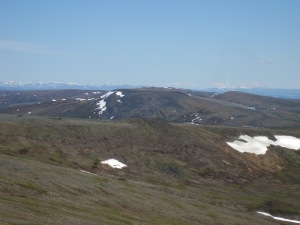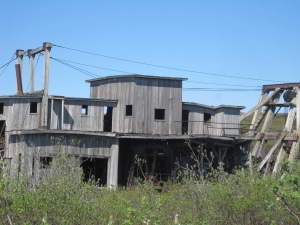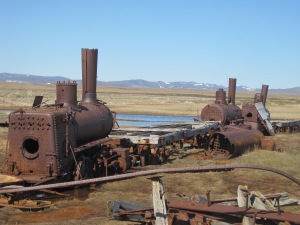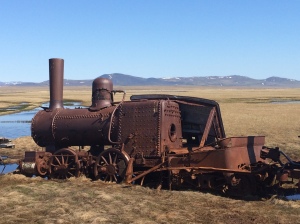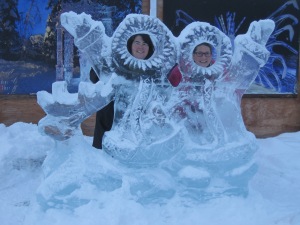March 22-25, 2016
When doing superintendent searches I get to go to a lot of great places, and this adventure lead me to Chevak. I flew from Juneau to Anchorage and Anchorage to Bethel on an Alaska Air jet then took a smaller airline (Grant Air) to Chevak. Chevak is located on the north bank of the Niglikfak River, 17 miles east of Hooper Bay in the Yukon-Kuskokwim Delta. Chevak is a Cup’ik Alaska Native village. The original tribe is the Qissunamiut Tribe. Commercial fishing and subsistence activities are an important part of the local culture. The community is not on the road system. The landscape consists of flat tundra and there are no trees, hence when it snows there are a lot of drifts and whipping wind! However, the river and rolling hills create a beautiful village and there are mountains with trees in the distance.
Alaska Native Cup’ik’s have inhabited the region for thousands of years. Chevak is also known as New Chevak because residents inhabited another village called Chevak before 1950. “Old” Chevak, on the north bank of the Kiuqllivik River, 9 miles east of Hooper Bay, was abandoned because of flooding from high storm tides. The name Chevak refers to “a connecting slough,” on which “Old” Chevak was situated. Chevak is one of two remaining Cup’ik communities.
Fish, seal, beluga, walrus, clams, waterfowl, editable plants and berries are harvested in this maritime climate. Temperatures range from -20º (with windchill) to 79ºF, while we were there it was 23 with windchill down in the single digits. Snowfall averages 20 inches per year. Freeze-up occurs at the end of October; breakup occurs in May or June.
I have to say the Cup’ik people are very friendly and proud of their local traditions and culture, and Chevak is said to be the friendlies village in Alaska. There are a lot of snowmobiles/snow machines AND 4 runners in town, but very few full sized vehicles. It is a dry village and the sale, importation or distribution of alcohol is banned in the village.

Enter a caption

taking advantage of the strong winds that blow through Chevak.

School District Logo



Enter a caption

kids are so happy and loving!

The Pledge of Allegiance in Cup’ik

When you enter the school there are cabinets full of traditional art! Aren’t these beautiful?






















